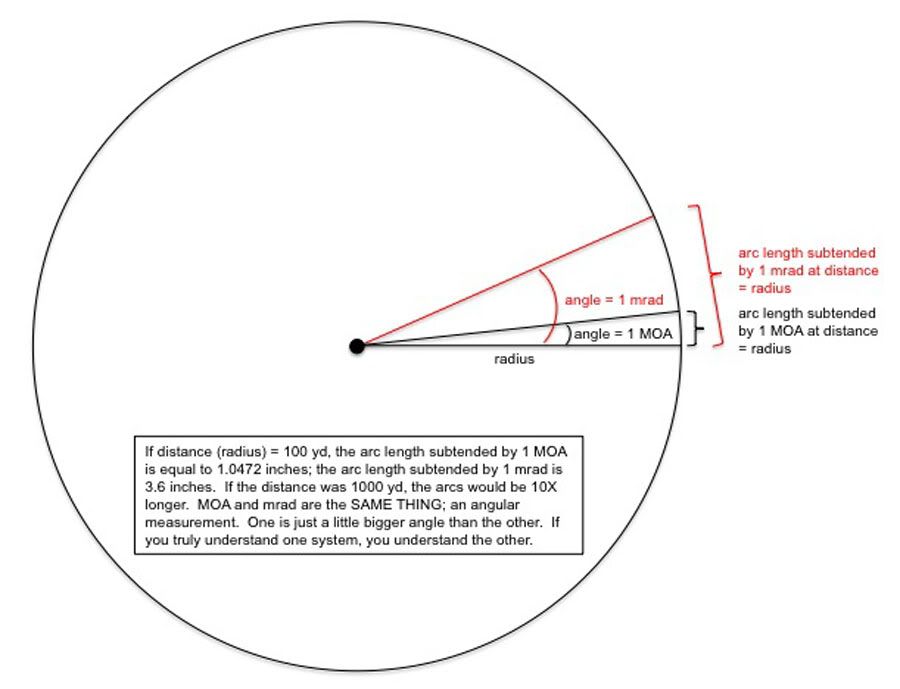Re: Moa conversions
<div class="ubbcode-block"><div class="ubbcode-header">Originally Posted By: gstaylorg</div><div class="ubbcode-body">I agree with you completely...right up to the point someone is having difficulty with something as simple as adjusting the elevation on their scope for a given distance. At that point it becomes necessary to adjust the amount of information given to aid the shooter in getting up to speed with basic scope adjustments before launching into a lot of other data that simply compounds the issue. I've seen the result of over-emphasizing how to convert angular measurement to arc length at some distance here often. You end up with an individual that tries to "think" in inches and feels it necessary to convert everything back and forth between angular and arc length measurements and needlessly complicates many simple shooting exercises that can be accomplished without any conversion whatsoever. I reiterate that if someone really understands how angular measurement works, conversion to arc length at some distance follows naturally. The reverse is not necessarily true and you will find strong evidence of that in posts here on a regular basis. </div></div>
I find new shooters here wanting answers which will sync to their misconceptions of what's important to good shooting. This is not possible. The OP is confused because he simply does not yet understand the concept period. Attempting to chunk his learning here with a partial reckoning does not address what he needs to know, such as if I'm 3 inches from where I want to be at 100 yards how many clicks do I need to take? If the target had an MOA grid he would of course not need to know anything about converting inches to MOA, however, with any sort of standard target he would indeed need to know how to convert using the formula: distance in yards divided by 100 times inches of displacement equals adjustment in MOA necessary to correctly move impact. Since the shooter has fractional MOA adjustments, he would divide MOA by .25 for answer in clicks. The shooter could I guess avoid conversion by buying speciality targets or by buying targets which in size equal multiples of MOA at distance but then are we not compensating for our own inability to teach. Reminds me of the military 25 meter sight-in target with sight adjustment grid. There's an example of since I can't teach it we'll just let the student get it later, which never happens.
BTW, I'm not ranting at you. I see this stuff everyday, folks wanting to know how to do it. I have so many folks ask me how to do it in fact that I felt compelled to print out a sight adjustment lesson which is straight out of a military curriculum on the matter. Thing is, folks just getting into it do not pick this stuff up right away.
One more thing, there are it seems a whole lot of folks out there who have just bits and pieces of what good shooting is all about. And, these folks may also have a head full of gobbledygook about good shooting passed down from others who actually knew nothing about good shooting but because they at one time pulled a trigger they were wrongfully assumed to know something, like granddad telling his grand-daughter to be sure and focus on the target. Any of these folks who get around to getting some training can be difficult to train unless the instructor initially asks them to abandon everything they know for a moment. Well, it can be a big mess to clean up sometimes. It's why, however, folks coming here are best advised to keep an open mind. Otherwise, conflict with what they think they know and what they really need to know will thwart their progress.




